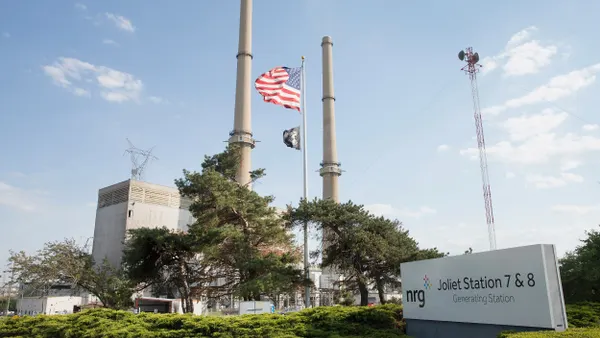Dive Brief:
- Wind energy has the largest base of installed capacity among renewable resources in the United States, according to new data from the American Wind Energy Association.
- AWEA said that at the end of 2016 installed wind capacity totaled 82,183 MW, enough to power 24 million average American homes when generating. It now tops hydro's 80,000 MW of installed capacity, making it the fourth-largest source of capacity in the U.S., behind gas, coal, and nuclear.
- One advantage is the resource's geographic diversity: according to AWEA, almost 90% of new wind capacity completed last year was located in Texas, the Plains states and across the Midwest — while the offshore wind industry just launched in December.
Dive Insight:
Wind power will double over the next five years, and by 2020 will supply 10% of the United States' energy needs, according to the wind energy group. And with the recent addition of North Carolina’s first utility-scale wind farm, AWEA said there are now more than 52,000 individual wind turbines in 41 states and two territories.
Texas is the easy leader, with approximately three times more wind generating capacity than any other state, and nearly a quarter of wind industry employment in the United States. Last year, Texas became the first state to pass 20,000 MW of wind capacity, and there is more than 5,400 MW under construction and another 1,300 MW in advanced development.
AWEA also noted that a "key part of the success story in Texas has been a strong backbone of transmission infrastructure."
But the next frontier of wind energy development in this country could be offshore, mirroring expansive growth in Europe. The U.S.'s first commercial offshore wind farm began operating in December offshore Rhode Island, delivering wind energy to the community of Block Island.
The 30 MW project will replace the community's diesel generation and excess power is sent to the mainland via an undersea cable. A legislative mandate for 1,600 MW of offshore wind in Massachusetts is expected to build important scale for the industry, allowing more of a toehold in U.S. markets.
AWEA amended its statement a day after issuing it, to detail the source of its figures. The group used data from the U.S. Energy Information Administration's Electric Power Monthly for November 2016 (table 6.2.B), to show installed resources, and then considered planned additions.














